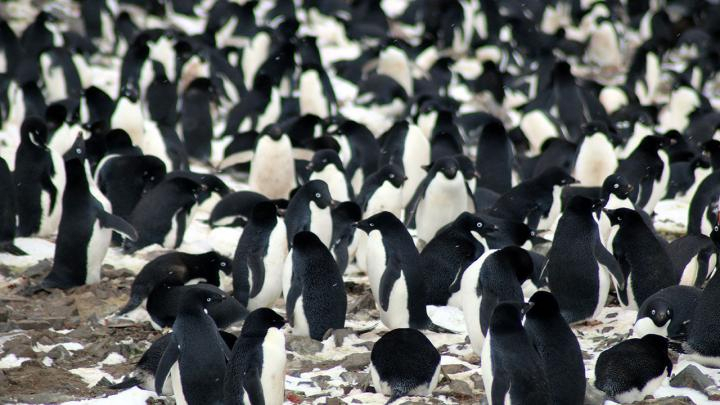
In a recent study, scientists have discovered a previously unknown super-massive colony of more than 1.5 million Adélie penguins in the Danger Islands, a group of remote, rocky islands off of the Antarctic Peninsula's northern tip.
For the past 40 years, the total number of Adélie Penguins, one of the most common on the Antarctic Peninsula, was reported to be steadily declining. But, it seems that the scientists can now debunk the notion of penguin declination.
The study, which has been published in the journal Scientific Reports on March 2, stated that drones were used to record videos of the penguins and later the scientists hand-counted the birds.
According to the scientists, the colony seems to remain unaffected by climate change and human disturbances. Previously there were reports that said that disturbances created by mankind were majorly responsible for the reduction in the size of other penguin colonies in different parts of the Antarctic Peninsula.
"Not only do the Danger Islands hold the largest population of Adélie penguins on the Antarctic Peninsula, they also appear to have not suffered the population declines found along the western side of the Antarctic Peninsula that are associated with recent climate change," Michael Polito, an assistant professor at Louisiana State University, who is also the co-author of the study said, according to EurekAlert.
Stephanie Jenouvrier, study co-author and a seabird ecologist at Woods Hole Oceanographic Institution (WHOI) said: "The population of Adélies on the east side of the Antarctic Peninsula is different from what we see on the west side, for example. We want to understand why. Is it linked to the extended sea ice condition over there? Food availability? That's something we don't know."
In 2014, the scientists were alerted about the penguin colony from several NASA satellite images of the Danger Islands that showed massive guano stains, also known as poop stains, on some rocks. Based on the tip-off, they started an expedition in 2015 and encountered thousands and thousands of Adélie penguins who have made the rocky islands their home.
"I was amazed by the sheer number...The water around the island boiled with penguins," Polito told fox2now.com.
Mercedes Santos, from the Instituto Antártico Argentino (who is not affiliated with this study but is one of the authors of the MPA proposal) with the Commission for the Conservation of the Antarctic Marine Living Resources, an international panel that decides on the placement of MPAs, said that the discovery will not only set a benchmark for future changes, but also provides important information for supporting proposed Marine Protected Areas (MPAs) near the Antarctic Peninsula.
The World Wide Fund for Nature (WWF) defines MPAs as marine reserves, which are fully-protected marine areas, no-take zones, marine sanctuaries, ocean sanctuaries, marine parks and locally managed marine areas.








